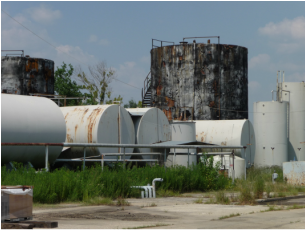
One of the least used by most attractive cleanup options is to use in-situ bioremediation to cleanup the spill. First, the site must be evaluated to ensure that all free petroleum products are removed to prevent the product from escaping in run-off from the site. The remaining soil, while contaminated, actually contains the hydrocarbons on the site. Instead of excavating the soil, the facility can apply a combination of nutrients, bio-compatible surfactants, and petroleum degrading microbial consortium to ensure rapid removal of remaining hydrocarbons on the soil.
An example of this approach was done in a tank farm with hydrocarbons accumulation in the working area. The area for the test was 120 feet x 70 feet and ran parallel to the pipe racks from the tank area. Since only a portion of the oil-contaminated area was to be treated, daily visual comparisons were convenient. Bench scale studies were initiated to analyze soil conditions and determine what changes would have to be made to rapidly degrade the oil in the soils present.
Contractors used a combination of fertilizer, biodegradable surfactants and bioaugmentation cultures to treat contaminated soils. Since the contamination was only in the upper 8 - 10 inches of soil, treatment via surface spray application was deemed sufficient for in-situ remediation. Fertilizer was added to give 120 ppm nitrogen and 30 ppm phosphorus. This fertilizer dose was based upon contamination (TPH) levels averaging 2,400 mg/kg.
After two weeks, the treated areas showed significantly less oil contamination as determined by visual inspection. The soil nutrient levels were checked and moisture was maintained at 30 – 40%. Visual observations were confirmed by laboratory testing which indicated average oil content dropping from 2,400 mg/kg to 550 mg/kg in the first 14 days of the project. After four weeks the contamination was only visible in vegetated areas with the overall average oil concentrations being 40 mg/kg.

 RSS Feed
RSS Feed